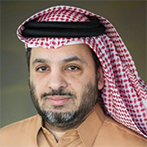Q: Leidos was recently selected as the prime contractor for providing cybersecurity and threat mitigation services to the Department of Homeland Security's NextGen Security Operations Center. Tell us a little bit about how you are using those same capabilities to help other enterprises evolve their security operations.
We are very excited to be selected by DHS to provide those services – we'd like to think it's a testament to our heritage and proven success conducting the cybersecurity mission for both government and commercial customers. To be honest, it's not so much a flow down from the government arena to the commercial side as it is a true bi-directional partnership. Both sides can—and do—learn from each other and draw on our shared Leidos experience to advance the overall state of cybersecurity.
Defending an enterprise, whether it falls under .GOV or .COM, takes a successful integration of people, process, and technology. The methodology we apply to the mission and the skillsets we bring to the table for both DHS and our commercial clients have evolved and been proven over time in the heat of the battle. We are in a unique position to leverage the tactics and techniques we have developed to meet the needs of one particular market, and then apply them to the other side as well.
One great example of this is our Arena ATM capability, which was first developed to support internal network defense operations, then simultaneously adapted for and rolled out to the government and commercial markets in slightly different flavors. All that said, there are reasons we maintain expertise in both markets – what works in one doesn't necessarily work in the other. For example, procurement and contracting operations operate differently, and hiring/staffing/workplace-logistics are often more flexible and or internationally dispersed in the commercial environments.
Q: Leidos has positioned its Managed Detection and Response service as capable of helping enterprises turn incident response into incident prevention. How do you help them do that?
Great question, and as a former network defender, the answer is near and dear to my heart. At the risk of oversimplification, I like to think of successful network defense as a marriage of four necessary components that build on each other. For any given threat, I have to first be able to see it, then I need to be able to understand it, then I can detect it, then I can finally stop it. It's usually the middle two that get all the press – analytics and capabilities are fun to talk about, and admittedly they make for great marketing material.
Visibility and controls though, are two of the most foundational elements that often get overlooked- and frankly these components provide some of the greatest return on investment to a cybersecurity organization.
Our Managed Detection and Response (MDR) solution is first built on the foundation of full enterprise visibility. We construct this picture through a custom combination of network sensors, host-based capabilities, and traditional enterprise data sets – and couple this with experienced analysts who know how to leverage the information to find and detect threats. We want to be able to answer all the questions to paint a complete picture. What is going on now, what happened, when did it start, and how did it occur—just to pick a few. The last step, and one that I would argue is the objective of any real network defender – is to prevent the incident in the first place. The ability to take lessons learned from a prior event or newly ingested threat intelligence and turn that information into active and effective mitigations is the key to successful network defense. We consider the "R" portion of MDR to be a key cog of our daily operations – it's not just the mad scramble that happens after an incident. Effective mitigations and detections are at the core of our methodology; our aim is to work smarter, not harder, and to focus our efforts and our customer's attention on those high priority events that truly matter.
Q: Leidos is a Platinum Sponsor of Black Hat USA 2017. What do you want attendees to learn about your company at the event?
At Leidos Cyber, we are Defenders first and foremost. While defending cyber interests globally for over a decade, we've developed a skilled team of defenders, advanced capabilities and a proven framework to protect what matters most to organizations.
We believe that successful cyber programs require great people with "Defender DNA." Facing the challenges posed by sophisticated cyber threats takes more than technology. It takes people. People with skills and innate qualities to outpace today's evolving threat landscape. We call these qualities "Defender DNA." Our practitioners take the mission to heart and thrive on opportunities to solve hard problems associated with defending an enterprise.
We strive to be a life-long partner to our clients rather than a point-in-time technology provider. We are committed to the long-term evolution of our clients, building upon a strong foundation and maturing capabilities to meet their challenges as the cyber threat landscape evolves over time. Our goal is to keep our clients ahead of the adversary and we do this by ensuring a strong and mature cybersecurity posture through technology, processes and most importantly, the right people.











